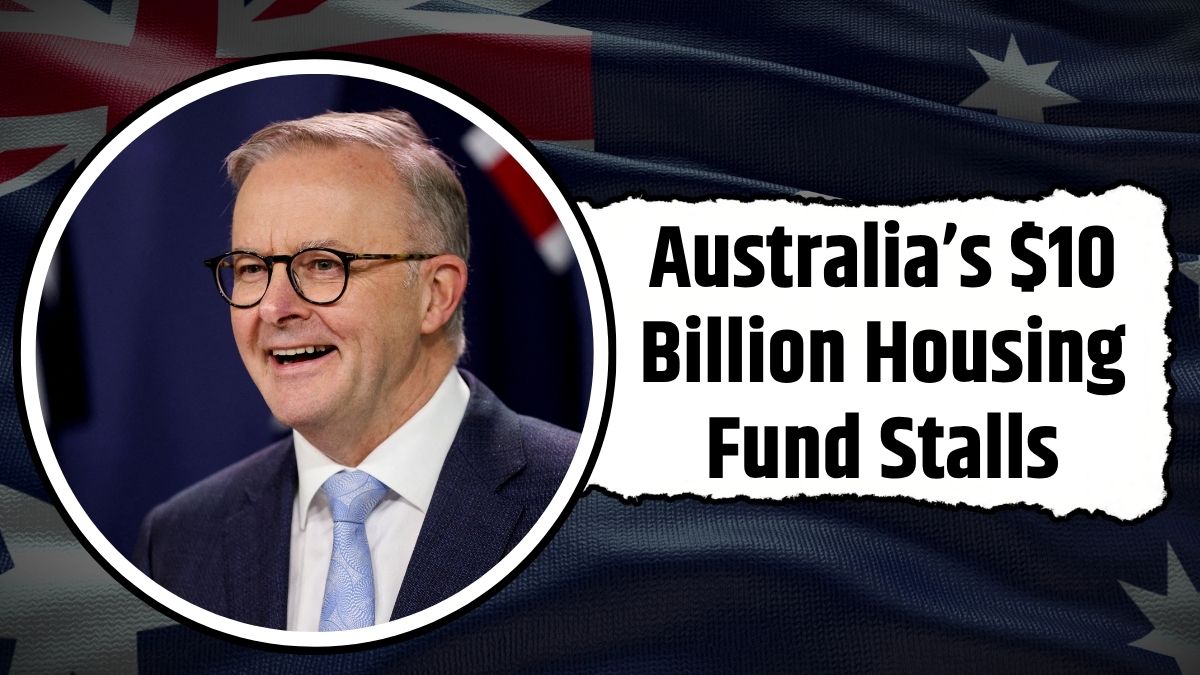When the Housing Australia Future Fund (HAFF) was launched in 2023, it was celebrated as a game-changing move to combat Australia’s deepening housing crisis. Backed by A$10 billion, the program aimed to deliver 30,000 new social and affordable homes within five years. However, two years later, the results paint a disappointing picture—only around 900 homes have been approved, and fewer than 200 completed. The vast gap between promises and delivery has triggered widespread criticism and a reassessment of the fund’s structure.
A Look at the National Performance by State
A comparative breakdown of the fund’s progress reveals slow movement across all regions.
| State/Territory | Promised Homes | Approved Homes | Completed Homes | Avg Delay (Months) |
|---|---|---|---|---|
| NSW | 6,400 | 1,120 | 190 | 14 |
| Victoria | 6,000 | 980 | 150 | 18 |
| Queensland | 5,200 | 870 | 120 | 15 |
| Western Australia | 3,800 | 650 | 105 | 12 |
| South Australia | 2,100 | 340 | 52 | 13 |
| Tasmania | 1,000 | 190 | 30 | 11 |
| ACT/NT | 500 | 90 | 13 | 10 |
This shortfall has raised alarms over the effectiveness and practicality of the fund, especially amid a worsening housing affordability crisis.
Political Ambitions Meet Real-World Bottlenecks
The HAFF was a key election promise and a central piece of the Albanese Government’s post-COVID recovery agenda. Yet the current output highlights the gap between bold political commitments and bureaucratic delivery. Delays in funding release, prolonged legislative deadlock, and sluggish approval processes have severely affected timelines during the fund’s crucial initial years.
Logistical Setbacks and Structural Hurdles
Several factors have slowed progress. A nine-month Senate gridlock delayed legislation needed to release the funds. Even after approval, the first funding round only allocated 312 homes by mid-2024. Rising construction material costs and ongoing labour shortages further disrupted project bids and scheduling. Additionally, local zoning complications frequently led to project redesigns, driving costs and delays even higher.
Red Tape Chokes Project Delivery
Despite its size, the fund is bogged down by multi-level approval chains, strict performance milestones, and annual drawdown caps. These complex governance requirements have made the scheme inaccessible for many community housing providers, particularly non-profits with limited capacity to meet stringent financial and operational conditions. Several providers have withdrawn, citing the fund’s structure as incompatible with the low-margin nature of social housing development.
Victoria’s Flagship Pilot Highlights Deeper Issues
The Victorian pilot project, intended to build 220 units by mid-2025, is now delayed until 2027. Originally budgeted at A$121 million, costs have soared to A$159 million, with A$11 million alone spent on soil contamination cleanup. This case reflects how rigid funding guidelines and unanticipated site conditions can completely derail even the most well-planned projects.
Financial Model Misaligned with Sector Realities
Community housing groups have raised concerns over the fund’s required financial returns. While most social housing projects yield just 1.8% in net returns, the HAFF demands returns of 2.5–3% plus CPI, making participation financially unviable for many non-profits. This misalignment between expected returns and sector economics is now seen as a critical barrier to participation.
Soaring Rents Worsen the Housing Crunch
The failure to deliver new housing units has tangible consequences. In 2024, national rents rose by 8.9%, followed by another 6.7% increase in the first half of 2025. The tight rental market has disproportionately impacted low-income renters, particularly in regional areas like Queensland’s Sunshine Coast and Western Australia’s South-West. Experts warn that rental vacancy drops of just 1% can lead to 2% rent hikes, compounding hardship for the most vulnerable.
Policy Reform Suggestions Gain Momentum
In response to growing criticism, several policy proposals are now gaining attention.
- Unlock A$2 billion from the fund for immediate construction
- Create a centralized digital approval system to streamline planning
- Introduce 10,000 trade apprenticeships tied directly to housing delivery
- Index fund payouts to material and labour cost indices to stabilize budgeting
These ideas aim to simplify access, speed up construction, and close the delivery gap while maintaining accountability.
Calls for Immediate Policy Overhaul
Experts argue that unless the government restructures the HAFF’s framework, the fund risks becoming a cautionary tale rather than a success story. With rental inflation surging and affordable housing supply stagnating, there is little time left for delay. A growing number of voices are now calling for bold, swift action to salvage the fund’s original vision.
FAQs
Q1. What is the Housing Australia Future Fund (HAFF)?
Launched in 2023 with A$10 billion in backing, HAFF is a government initiative aimed at delivering 30,000 new social and affordable homes over five years.
Q2. How many homes have been completed so far?
As of mid-2025, fewer than 200 homes have been completed, with just around 900 approved.
Q3. Why is progress so slow?
A combination of legislative delays, approval bottlenecks, labour shortages, and high material costs have severely impacted timelines.
Q4. What are the financial concerns raised by community housing providers?
Most providers say the required return rates of 2.5–3% plus CPI are unrealistic for social housing, which typically yields around 1.8%.
Q5. Are there any reforms being proposed?
Yes. Proposals include immediate fund disbursements, simplified planning approvals, and expanding the construction workforce through apprenticeships.






